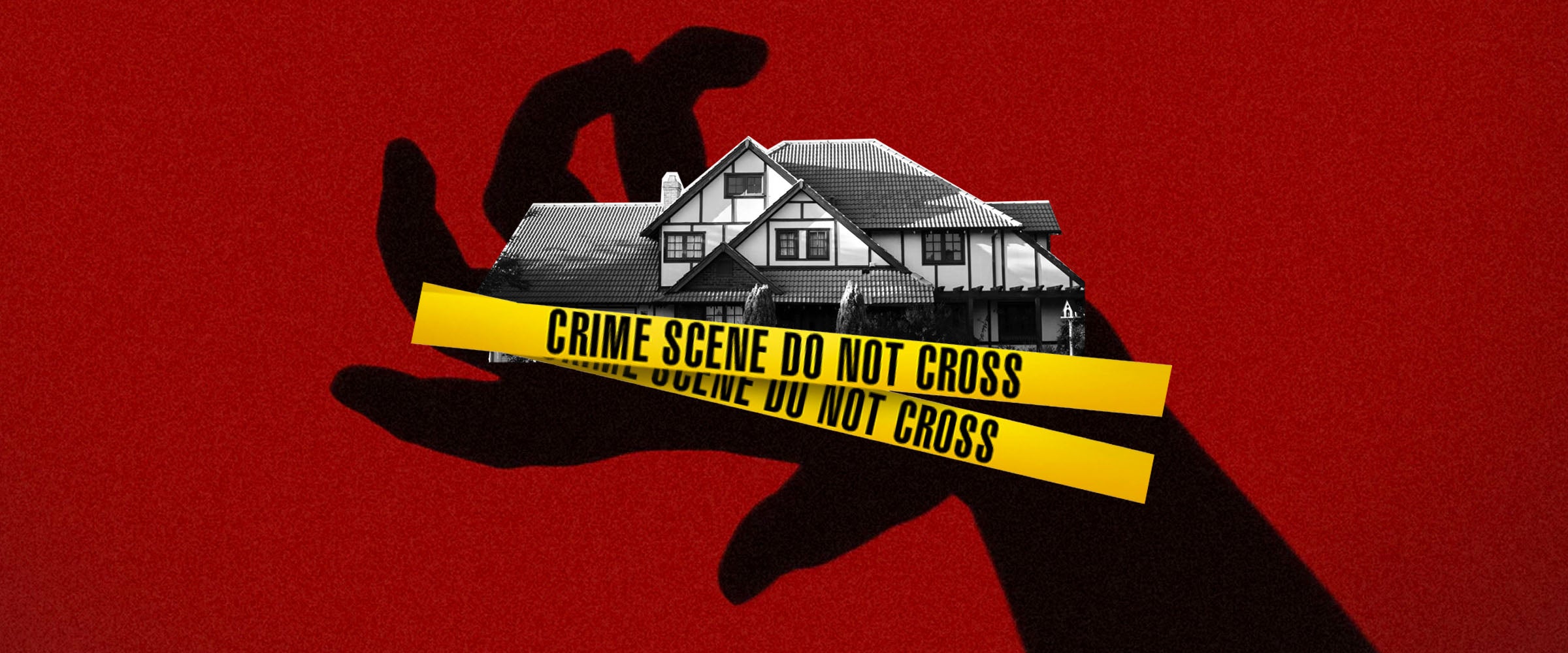Meth-fueled neighbors and cockroach-infested kitchens may devalue your home, but their financial impact is negligible when compared to someone peacefully passing away in the master bedroom, accidentally overdosing in the basement or becoming a victim of cold-blooded murder in the attic.
“The amount of value decrease that occurs to a property after a death onsite can run the gamut from a few percentage points to downright loss of value,” says real estate broker John Graff. “The difference is all in the details: Was the homeowner elderly, and therefore, died in bed of natural causes? That’s not unusual, and while possibly creepy for a would-be buyer, it shouldn’t detract from the purchase price. More heinous crimes, like murders, will affect perceptions and values more. If it’s a property [associated with] an infamous crime, the home might not be able to survive at all, with the owners opting to tear it down and rebuild.” One highly publicized example of this is the L.A. home where the Manson “family” committed the Tate murders in 1969 — the house was later demolished and even underwent an address change after decades of being sold far below the listing price.
In other words, as with many things in real estate, it really just depends. Case in point: One study found that Ohio houses associated with murder or suicide take 50 percent longer to sell at an average of 2.4 percent less than comparable homes, whereas another study discovered that home prices in Sydney, Australia, decrease by more than four percent if a murder occurs within two-tenths of a mile of the home, let alone within the actual house.
As Graff mentioned, this value-killing effect can be further exacerbated when the death is highly publicized. For instance, the California condominium belonging to Nicole Brown Simpson sold for $200,000 less than it was worth (after sitting on the market for more than two years) as a result of the negative publicity that it received during the O.J. Simpson Trial. After an extensive remodel and an address change, the condo sold once again in 2006 for $1.72 million — the exact identity of the current owner (and their intentions with the home) remains uncertain.
In many states, there are also laws that require sellers to tell potential buyers if someone has died in the house. “These laws vary from state to state, so if you’re selling a home where a death occurred, it’s vital that you understand your local laws and comply,” Graff warns. “Some states, like Pennsylvania, require no disclosure; whereas states like California require notification of any death, natural or otherwise (with exceptions for deaths related to AIDS), on the property within the previous three years.”
It’s worth noting that spooky stories from people living in homes that have been the site of a death are plentiful on the internet. Per redditor piranhasaurusTex [sic]:
“I’ve been living in a suicide townhome for six months now. I don’t know the details. My landlord just told us when we were viewing the home that the previous tenant’s husband had killed himself in the house, and that’s why she was moving out.”
“Just last week, I had my first experience. I was laying in bed wide awake at about 1 a.m. (I’m eight months pregnant, and sleep doesn’t come easy anymore) when I heard footsteps coming down the hallway toward my room. I assumed it was one of my kids coming to climb into bed with me, but the footsteps stopped right outside my door. Now, usually we keep our bedroom door open at least a little, but that night it was completely closed. So when the footsteps stopped outside my door, I assumed the kid on the other side was just deterred for a moment. So I laid there waiting, but the door never opened, and I never heard footsteps receding down the hallway.”
That said, if the thought of ghosts roaming your halls doesn’t make your skin crawl, the value-reducing effect of a death in the home might actually work in your favor. “I’ve heard of some buyers actively seeking out stigmatized homes, either because they’re eager to land a home for a discount or because they’re attracted to the macabre idea of a death in the home,” Graff says. Take civil rights attorney Lisa Bloom and her husband Braden Pollock. They recently purchased the infamous Los Feliz Murder Mansion, which was the site of a gruesome murder-suicide in 1959, and Pollock told Realtor.com that they were simply bargain hunting: “It was a great opportunity to get a rare property like this at a good price.”
As for Graff and other real estate brokers, attempting to sell a murder home is just another day on the job. “Real estate agents see a lot of unusual stuff in our daily lives, so a home with a death on site isn’t so unusual for us,” he explains. “But that doesn’t mean it won’t send a shiver up our spine when we have to walk through the home after an open house to turn all the lights off and lock up.”



